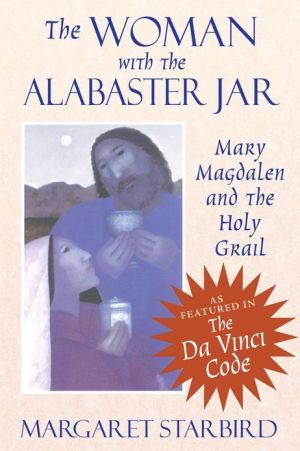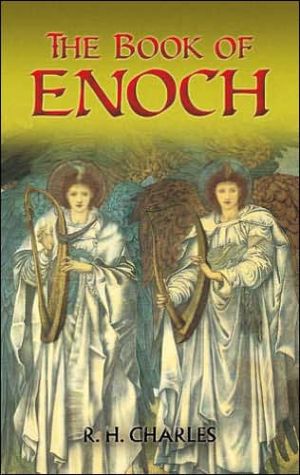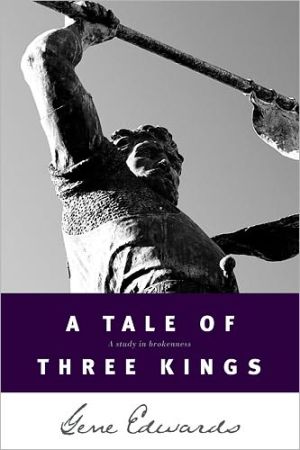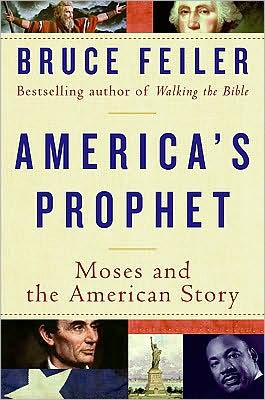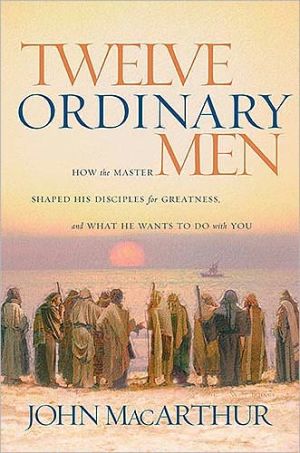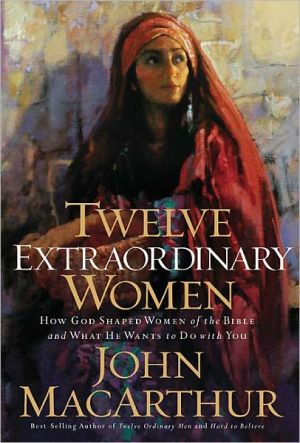The Woman with the Alabaster Jar: Mary Magdalen and the Holy Grail
Margaret Starbird’s theological beliefs were profoundly shaken when she read Holy Blood, Holy Grail, a book that dared to suggest that Jesus Christ was married to Mary Magdalen and that their descendants carried on his holy bloodline in Western Europe. Shocked by such heresy, this Roman Catholic scholar set out to refute it, but instead found new and compelling evidence for the existence of the bride of Jesus—the same enigmatic woman who anointed him with precious unguent from her “alabaster...
Search in google:
Roman Catholic scholar Margaret Starbird’s extensive study of history, symbolism, medieval art, mythology, psychology, and the Bible uncovers new and compelling evidence that Jesus Christ was married to Mary Magdalen. Starbird’s investigation of this suppressed history calls for a restoration of the feminine principle to its intended place in the canon of Christianity. National Catholic Reporter "As Starbird says, 'No wonder icons of Mary weep!' "
from Chapter 1\ The Lost Bride\ The Sacred Prostitute\ While two Gospels, those of Mark and Luke, maintain that Mary Magdalen was healed by Jesus of possession by seven demons, nowhere does it say she was a prostitute, and yet this stigma has followed her throughout Christendom. The original story of the anointing of Jesus at Bethany by the woman with the alabaster jar may have been misinterpreted by the author of Luke's gospel writing nearly fifty years after the event. The anointing performed by the woman at Bethany was similar to the familiar ritual practice of a sacred priestess or temple "prostitute" in the Goddes cults of the Roman Empire. Even the term prostitute is a misnomer. The term, chosen by modern translators, is applied to the hierodulae, or "sacred women" of the temple of the Goddess, who played an important part in the everyday life of the classical world. As priestesses of the Goddess, their importance dates back through the centuries to the Neolithic period (7000-3500 B.C.), back to the time when God was honored and treasured as feminine throughout the lands that are now known as the Middle East and Europe.\ In the ancient world, sexuality was considered sacred, a special gift from the goddess of love, and the priestess who officiated at the temples of the love goddesses in the Middle East were considered holy by the citizens of the Greek and Roman empires. Known as "consecrated women," they were held in high esteem as invokers of the love, ecstacy, and fertility of the Goddess. At some periods of Jewish history, they were even a part of the ritual worship in the Temple of Jerusalem, although some of the prophets of Yahweh deplored the influence of the Great Goddess locally called "Ashera." The discovery in Israeli achaeological digs of virtually thousands of figurines of the Sumerian/Canaanite love goddess (Inanna, Astarte), holding her breasts cupped in her hands, has convinced experts that the worship of the Hebrew version of this goddess was commonplace in ancient Israel. The priestess of the love goddess was a familiar sight in every city of the Roman Empire, including Jerusalem.\ In the Gospel context, the woman with the alabaster jar of unguent may have been one of these priestesses. But curiously, Jesus does not seem to have been at all affronted by her action when she anointed him. He even told his friends gathered at the banquet in the house of Simon at Bethany that the woman had anointed him for burial (Mark 14:8, Matt. 26:12). The significance of this statement cannot possibly have been misunderstood by the early Christian community, which preserved this story in its oral tradition. The anointing for burial was an enactment of a key part of the cult ritual of the dying/rising sun and the fertility gods of the whole region washed by the Meditteranean Sea.\ The anointing by the woman with the alabaster jar was familiar to the citizens of the empire because of the cultic ritual of their love goddess. But in more ancient times, the anointing of the sacred king was the unique privilege of a royal bride. For millennia this same action had been part of an actual marriage rite performed by a daughter of the royal house, and the marriage rite itself conferred kingship on her consort.\ In those remote times, up until about the third millenniem B.C., most of the societies of the Near and Middle East had been matrilineal, with property and position passed through the mother and female kinship. In fact, among the royal houses of much of the region, this practice continued well into classical times. Both the Queen of Sheba nd Cleopatra of Egypt ruled as dynastic heiresses. In Palestine, almost contemporaneously with Jesus, the Edomite king Herod the Great (who reigned from 37-4 B.C.), claimed the throne of Israel on the basis of marriage to Mariamne, a descendant of the Hasmonian House of Maccabees, the last legitimate rulers in Palestine.
Illustrations Acknowledgments Foreword by Rev. Terrance Sweeney, Ph.D. Preface PROLOGUE: Miriam of the Garden CHAPTER I: The Lost Bride CHAPTER II: The Bridegroom CHAPTER III: The Blood Royal and the Vine CHAPTERIV: The Twelth-Century Awakening CHAPTER V: Relics of the Hidden Church CHAPTER VI: Heretical Artists anf Their Symbols CHAPTER VII: The Unicorn and the Lady CHAPTER VIII: The Bride in Folklore and Legend CHAPTER IX: The Desert Shall Bloom EPILOGUE: The Sacred Reunion Notes Selected Bibliography Index About the Author
\ Catholic Women's Network"Provocative and controversial—it will outrage some and give hope to others."\ \ \ \ \ National Catholic Reporter"As Starbird says, 'No wonder icons of Mary weep!'"\ \ \ Nexus"This fascinating and courageous narrative takes a fresh look at the true meaning of the Holy Grail and the defeminization of the early church, and comes up with some shocking revelations that may change the way one perceives Christianity forever."\ \ \ \ \ John Shelby Spong“Margaret Starbird is a seeker after truth. She seeks to recover the long-suppressed, and not infrequently emotionally opposed, feminine side of the Christian story. Hers is an exciting narrative probing regions of thought long neglected. Magdalen, the Great Mary, emerges with new power.”\ \ \ \ \ Dan Brown"Margaret Starbird's work is of particular interest to me because it fuses the diverse fields of symbolism, mythology, art, heraldry, psychology, and gospel history. Her research opens doors for each of us to further explore the rich iconography of our own spiritual history."\ \
